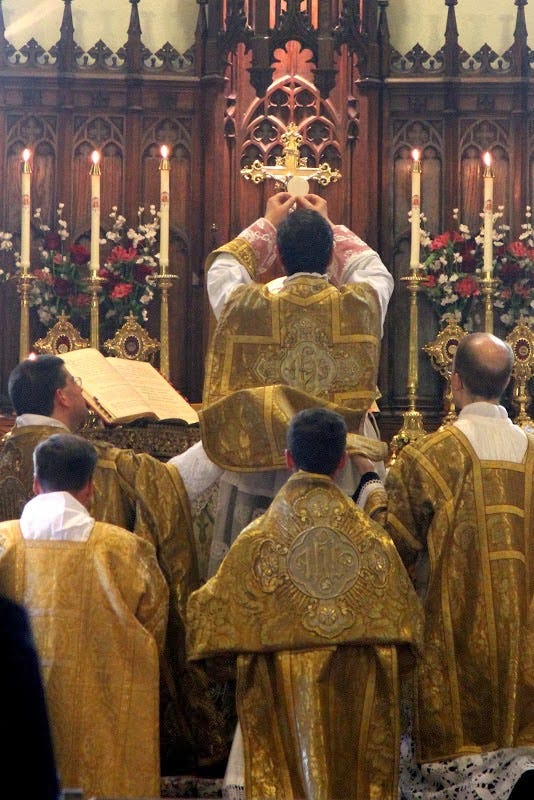First, I recognize that with the exception of one beloved contributor, this blog has mostly been used for philosophical, political, and economic argumentation. My goal in writing this is not to make an argument about the objective supremacy of either form of mass, but instead to describe my experience with the Latin Mass.
I had always been curious about Tridentine Latin Mass. Though I never considered myself as much of a traditionalist, there is always a lot of chatter in conservative Catholic circles regarding the beauty of this mass. One friend from college loves Latin Mass, so I decided that it would be nice both to open myself to this new experience and also catch up with a friend.
After driving for roughly a half-hour, I pulled up to this impressive, beautiful Church with tall spires and a traditional aesthetic. I stepped out of my car and checked my phone. My friend instructed me to walk to a small chapel down the road. I walked past the Church and across the street to a quaint chapel roughly the size of a small classroom. My first observation was the youth of the congregation. In most Catholic services, you have your fair share of young families, but they are vastly outnumbered by the elderly. That said, this was a refreshing change of pace. I genuflected, stepped into a pew, and sat down.
Anyone who knows me well knows I struggle to learn other languages. I struggled through all three semesters of college Spanish I have taken. I also had no prior knowledge of Latin, so this was certainly going to be a learning experience.
My plan was to find my friend and sit with him, however, the dimly lit Chapel made it very difficult to discern where he was. This, in conjunction with my 5’6” frame made this objectively impossible.
The priest walked to the altar and the mass began. In my view, there were two differences that stuck out to me. First, the mass is conducted ad orientem, or to the east and towards the tabernacle, where Christ resides. Generally, the priest will conduct mass facing the people. In more traditional services, the priest faces the altar. To non-Catholics, and even some Catholics, this makes no sense. Why would you have a priest face away from the congregation as he is doing mass? The answer is simple yet deeply important. The priest faces towards the tabernacle because that is where Christ is. Catholics believe that the Eucharist is not a symbol of Christ, but is the body of Christ himself. The Eucharist, not the sermon, is the focal point of the mass. Thus, it makes sense to conduct the consecration (when the transubstantiation occurs) facing the Eucharist and away from the people. This I deeply appreciated. The Eucharist is a blessing many Catholics (myself included) take for granted. This aspect of the mass added a certain reverence for the Eucharist and helped me further appreciate its centrality to my faith.
Second, is a greater appreciation for the tradition of the mass. While the term “cultural Catholic” is often used as a pejorative to describe someone who has watered down their religious beliefs to celebrations of holidays, there is a real culture behind the faith. One’s religious identity is more important than nationality, ideological identification, or ethnicity. The Tridentine Latin Mass was established in 1570 and is derived from forms of the mass dating back to the Church Fathers. It brought certain joy knowing that I had participated in the same form of the mass as my religious ancestors.
I would encourage, anyone, Catholic or not, to attend one Latin Mass. In spite of its decrease in prevalence, the Latin Mass remains a beautiful relic of Catholic history and a reminder of the great tradition that preceded us.




